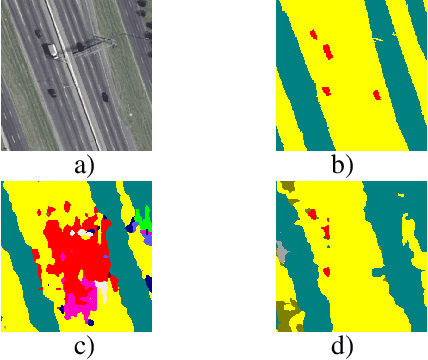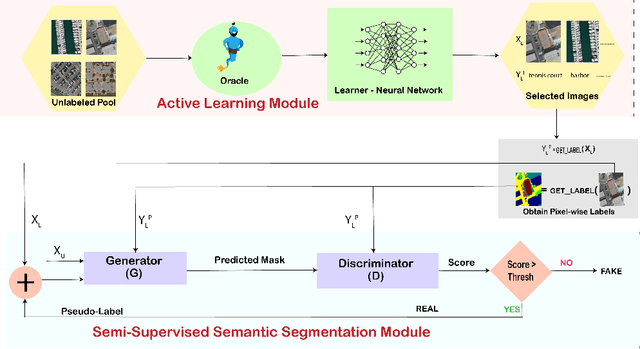Shasvat Desai
A Survey on Data Curation for Visual Contrastive Learning: Why Crafting Effective Positive and Negative Pairs Matters
Feb 12, 2025Abstract:Visual contrastive learning aims to learn representations by contrasting similar (positive) and dissimilar (negative) pairs of data samples. The design of these pairs significantly impacts representation quality, training efficiency, and computational cost. A well-curated set of pairs leads to stronger representations and faster convergence. As contrastive pre-training sees wider adoption for solving downstream tasks, data curation becomes essential for optimizing its effectiveness. In this survey, we attempt to create a taxonomy of existing techniques for positive and negative pair curation in contrastive learning, and describe them in detail.
Active Learning for Improved Semi-Supervised Semantic Segmentation in Satellite Images
Oct 15, 2021



Abstract:Remote sensing data is crucial for applications ranging from monitoring forest fires and deforestation to tracking urbanization. Most of these tasks require dense pixel-level annotations for the model to parse visual information from limited labeled data available for these satellite images. Due to the dearth of high-quality labeled training data in this domain, there is a need to focus on semi-supervised techniques. These techniques generate pseudo-labels from a small set of labeled examples which are used to augment the labeled training set. This makes it necessary to have a highly representative and diverse labeled training set. Therefore, we propose to use an active learning-based sampling strategy to select a highly representative set of labeled training data. We demonstrate our proposed method's effectiveness on two existing semantic segmentation datasets containing satellite images: UC Merced Land Use Classification Dataset and DeepGlobe Land Cover Classification Dataset. We report a 27% improvement in mIoU with as little as 2% labeled data using active learning sampling strategies over randomly sampling the small set of labeled training data.
 Add to Chrome
Add to Chrome Add to Firefox
Add to Firefox Add to Edge
Add to Edge